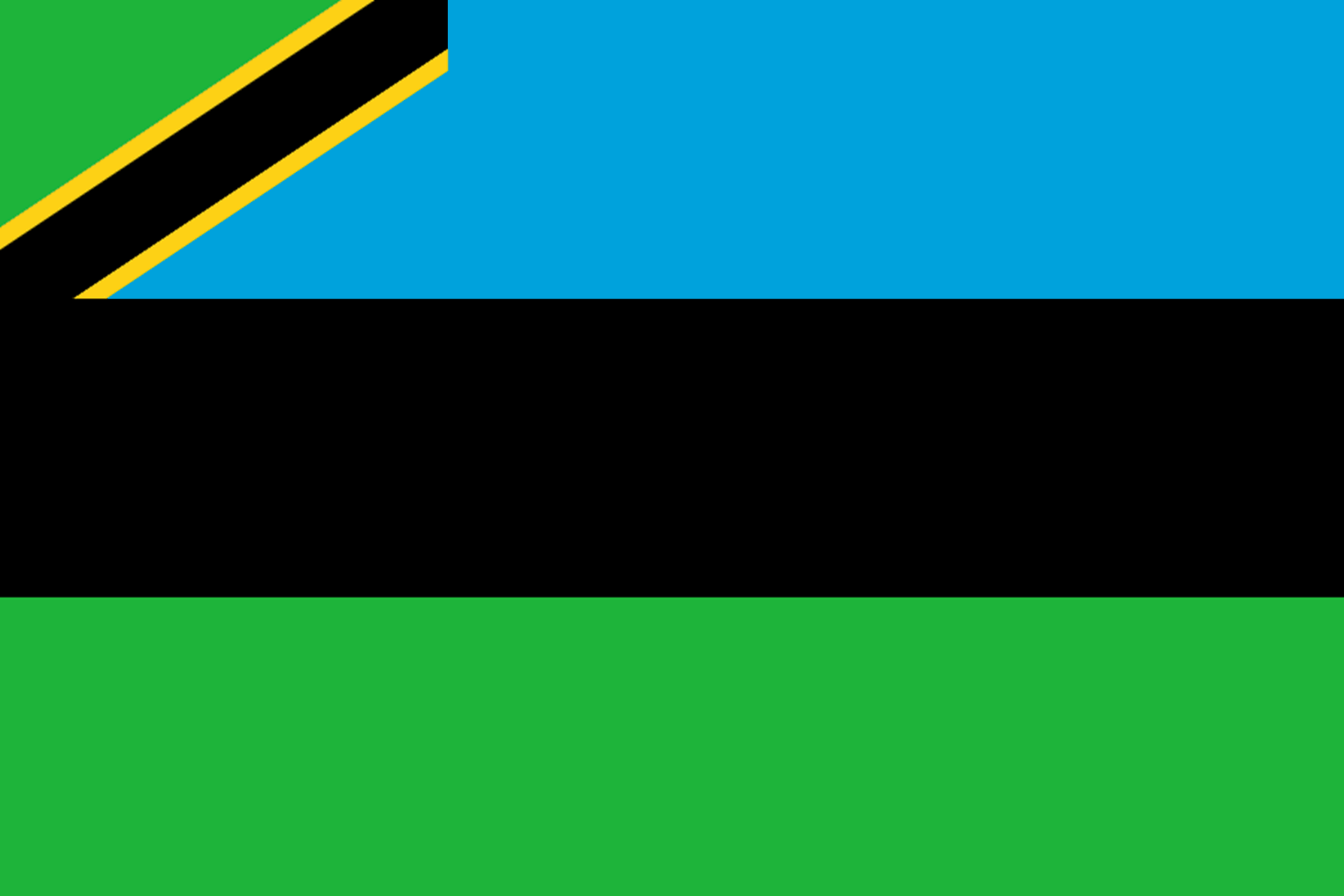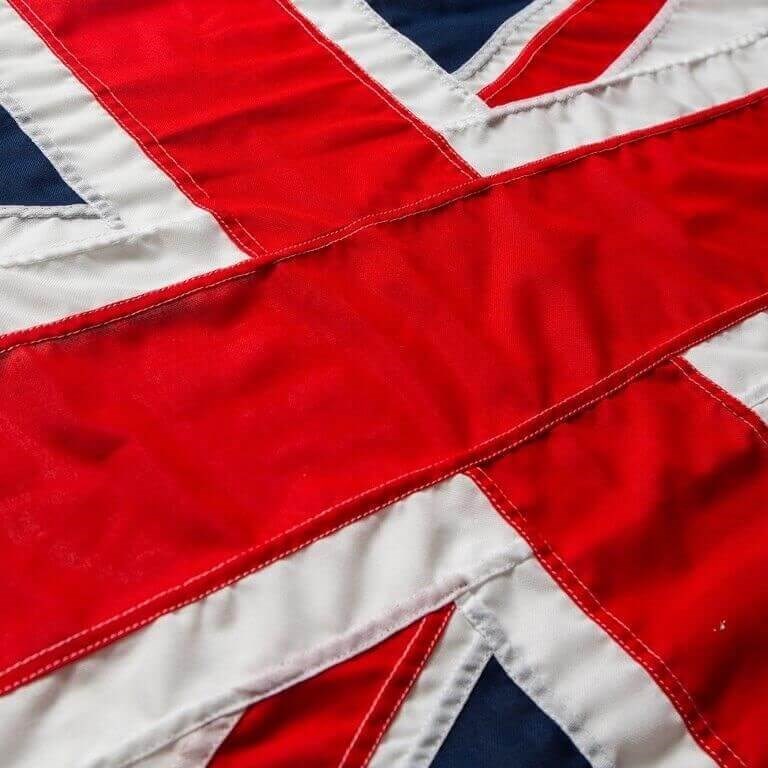Trivia
The current flag is a mix of the flag of Tanganyika and Zanzibar.
Technical Specifications
| Adopted | 30th June 1964 |
|---|---|
| Proportion | 2:3 |
| Design | A green and blue triangle separated by a black yellow-edged diagonal band. |
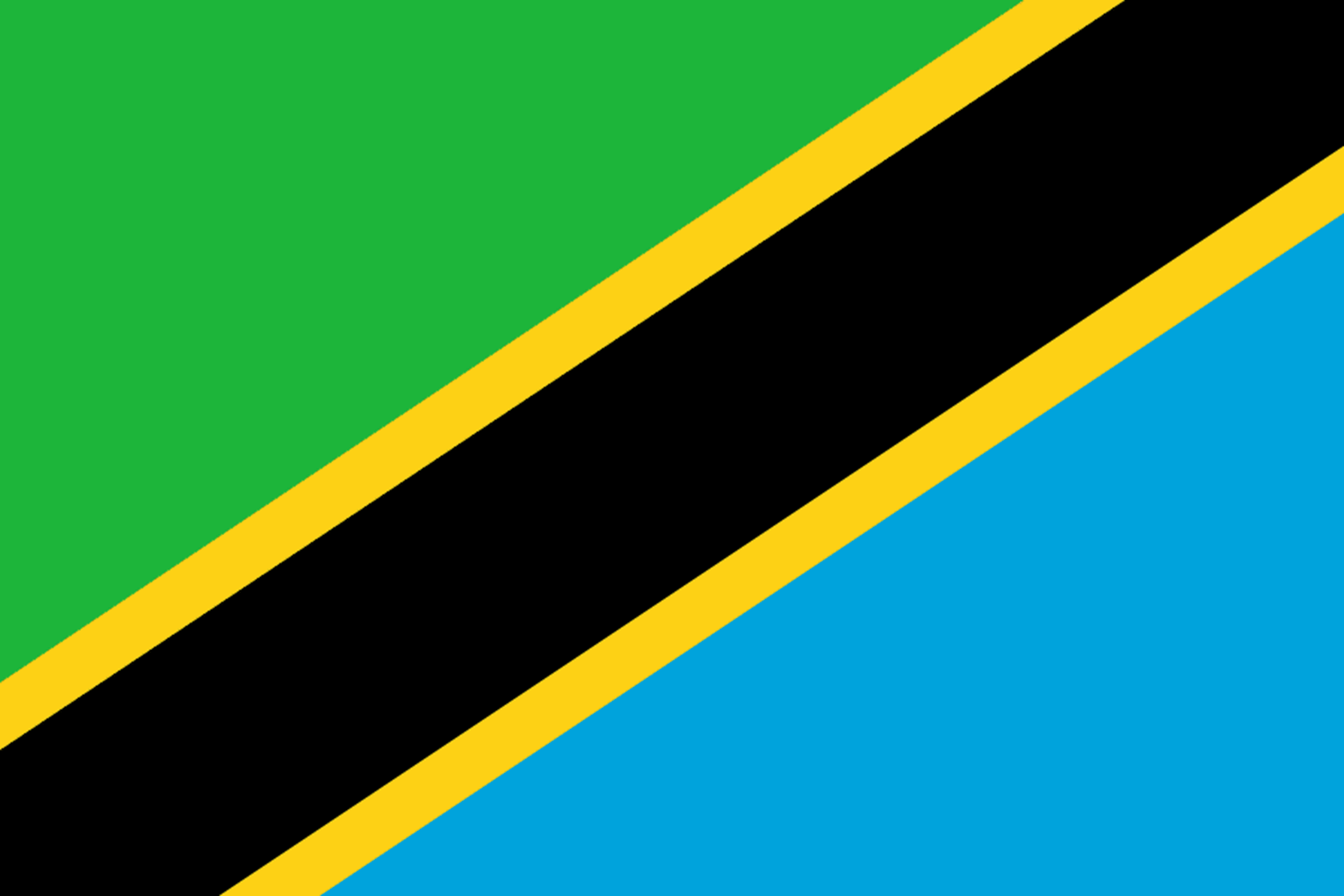
Brief History
Under Omani rule the Sultanates of Zanzibar would fly a simple plain red flag. In 1891 the Germans took over Tanganyika and merged it with Burundi and Rwanda to created German East Africa. The flag flown during this period was a white field with a black cross and the top left portion was red with five five-pointed stars.

The Flag of the Sultanate of Zanzibar (Up to 1891)
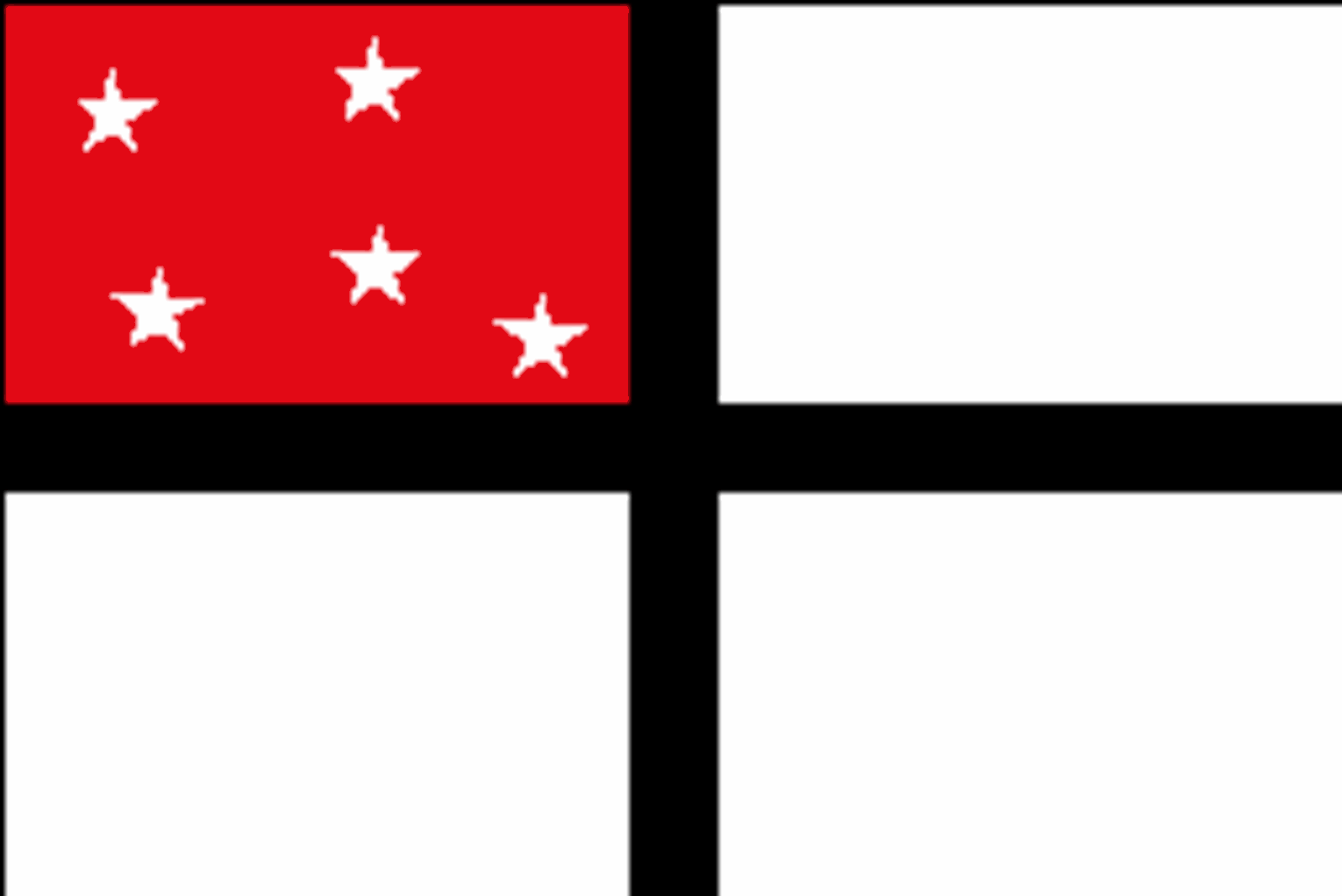
The Flag of German East Africa (1891 – 1916)
When the German Empire collapsed after World war One Britain took over control of Tanganyika and a British Red Ensign was adopted with a white circle that featured a giraffe. In 1951 Tanganyika became a sovereign state and a new flag was adopted that was a green and black with yellow-bordered stripes.
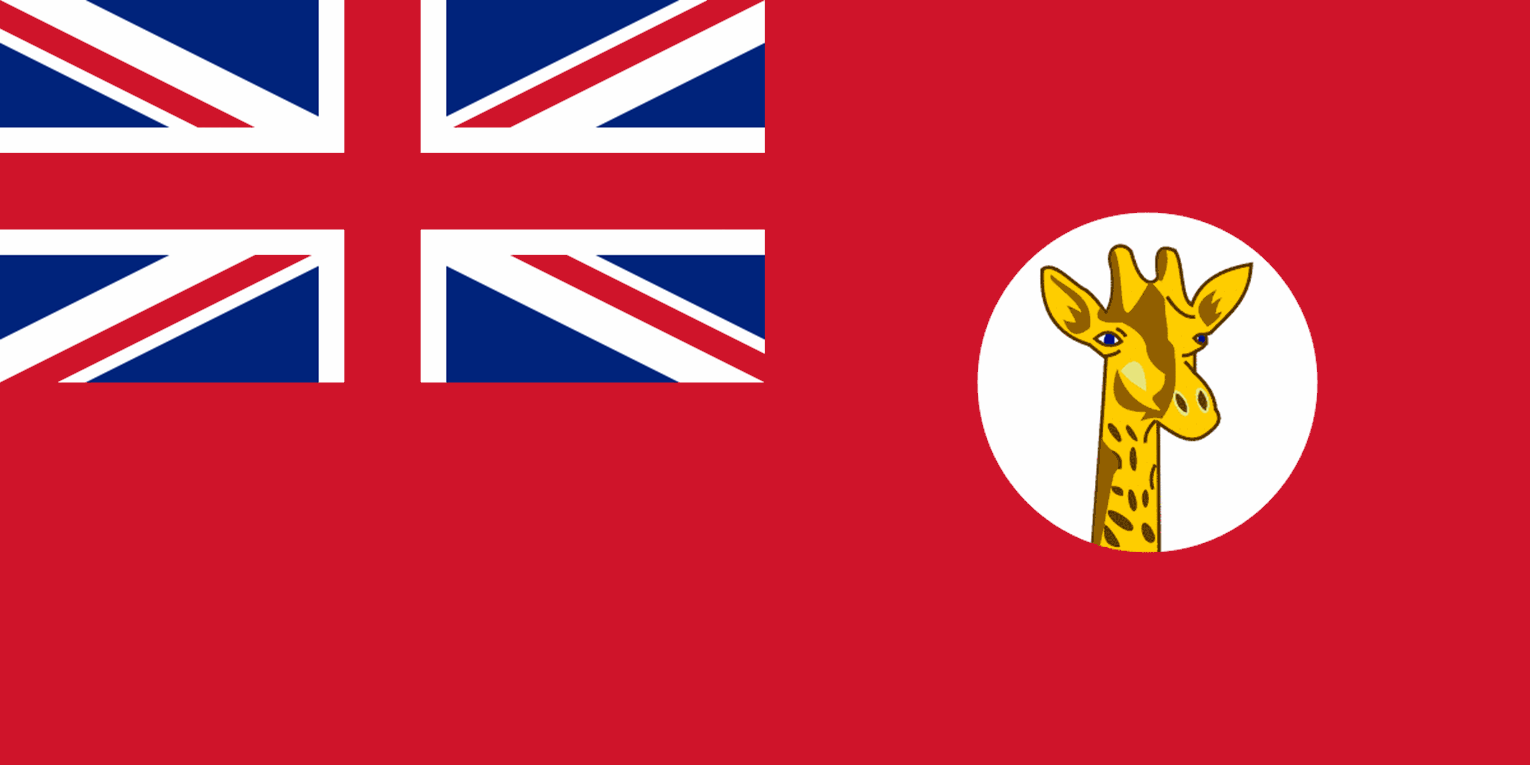
The Flag of Tanganyika Territory (1916 – 1961)
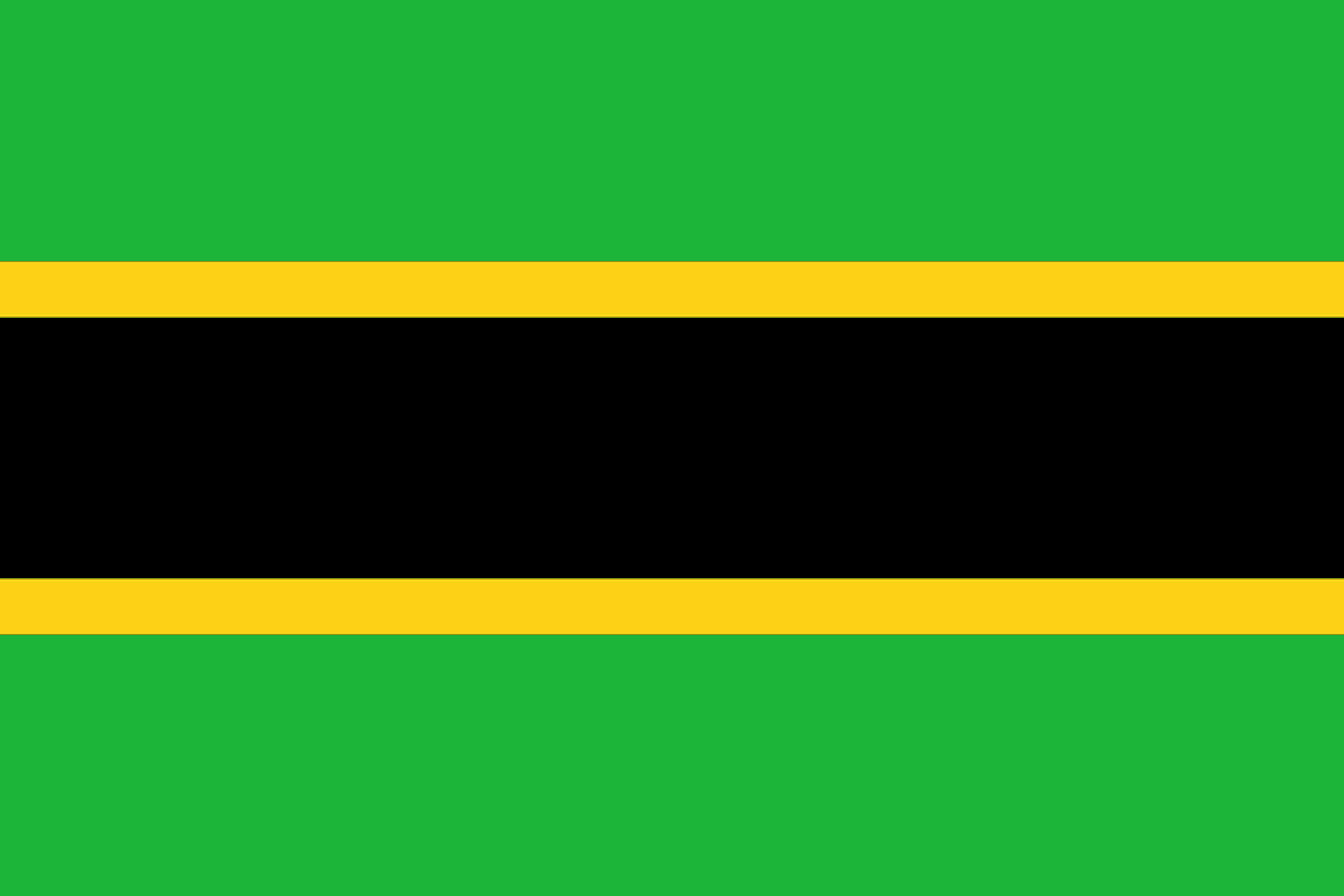
The Flag of Tanganyika (1961 – 1964)
When Zanzibar gained independence from the British Empire in 1963 a new flag was adopted that added a green circle and two yellow cloves added to a plain red field. When the area became the People’s Republic of Zanzibar and Pemba in January 1964 a new black-yellow-blue horizontal tricolour was adopted.
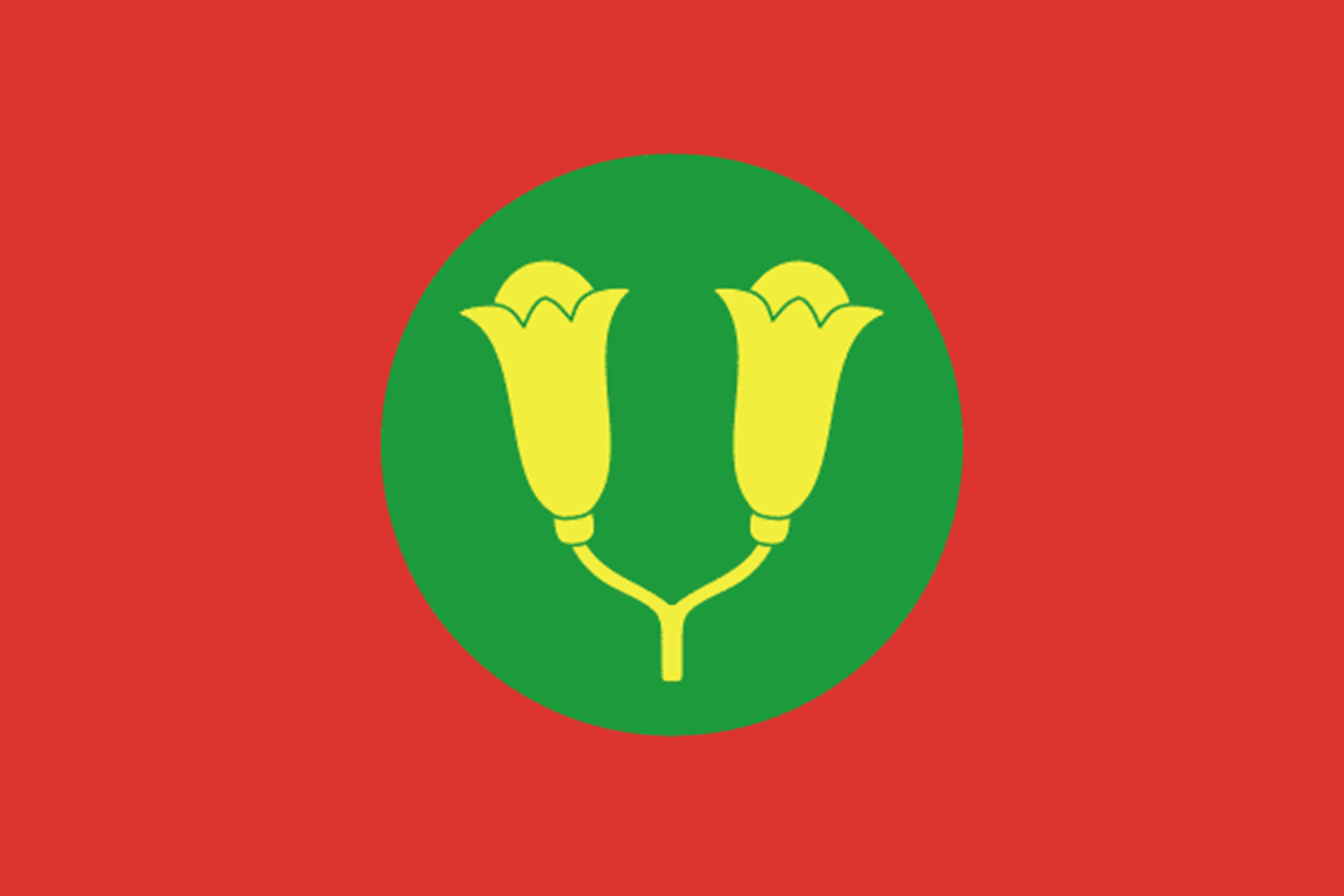
The Flag of the Sultanate of Zanzibar (1963 -1964)

The People’s Republic of Zanzibar and Pemba (12th January – 29th January 1964)
In the same month the flag was changed again to a blue-black-green horizontal tricolour. When Zanzibar merged with Tanganyika, to crated Tanzania, the new flag adopted elements of the two previous flags. The final flag was a green and blue bicolour with a diagonal black bar with a yellow-border. The green represents the vegetation, black represents the people, blue is the ocean and yellow is the riches.
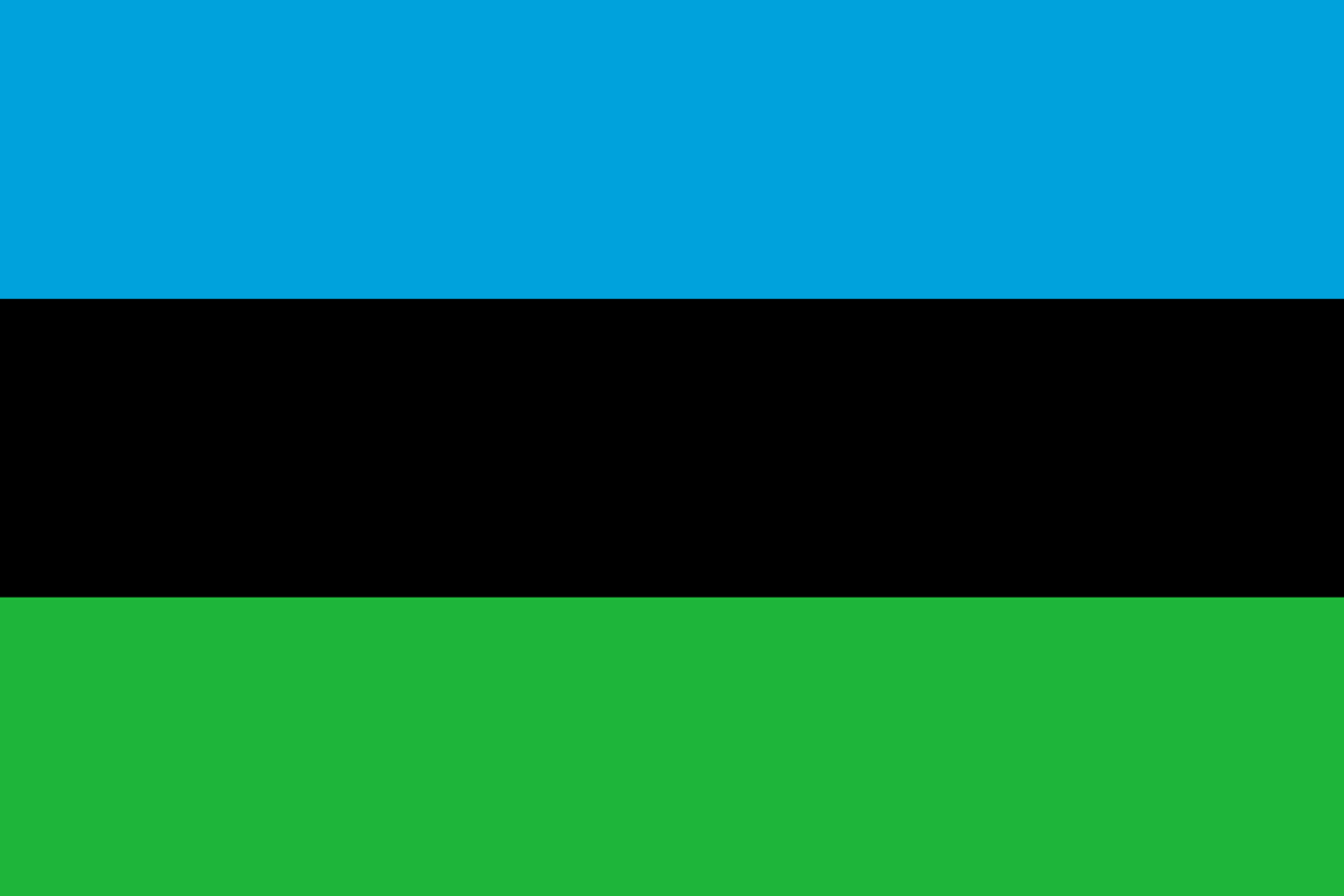
The People’s Republic of Zanzibar and Pemba (January – April 1964)

The Flag of Tanzania (1964 to Present Day)
In 2005 to celebrate Zanzibar being a semi-autonomous part of Tanzania a new flag was adopted for that region. It is the previous blue-black-green horizontal tricolour of the People’s Republic of Zanzibar and Pemba with the flag of Tanzania in the top left hand corner.
